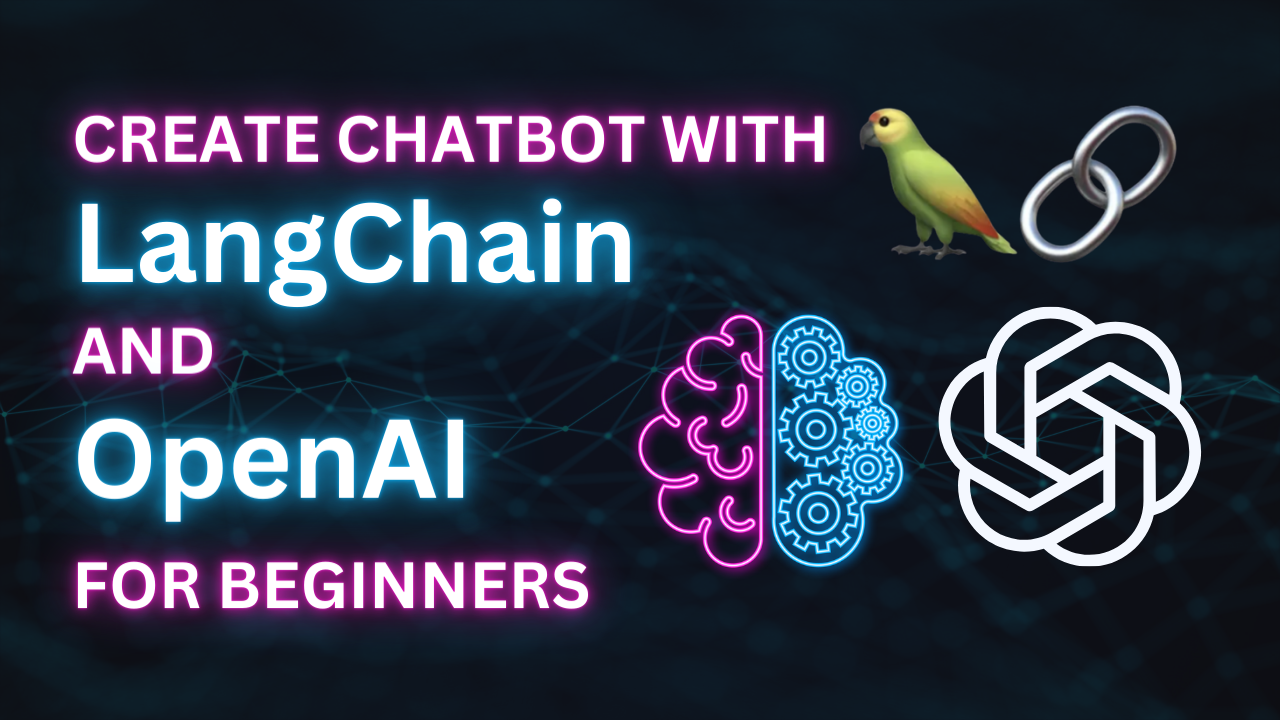Creating Your First Chatbot with LangChain and OpenAI: A Step-by-Step Tutorial
Introduction: Hey there, tech enthusiasts and aspiring chatbot builders! Are you ready to embark on an exciting journey into the world of conversational AI? In this blog post, we'll dive deep into the...

Introduction: Hey there, tech enthusiasts and aspiring chatbot builders! Are you ready to embark on an exciting journey into the world of conversational AI? In this blog post, we'll dive deep into the process of creating a powerful and engaging chatbot using LangChain and OpenAI. Whether you're a beginner or have some experience with programming, this guide will walk you through each step, providing detailed explanations and code snippets along the way.
But before we get started, please share this post with your friends, and subscribe to our channel for more amazing content on AI and chatbot development and make sure to smash that like button on the following youtube video!
Prerequisites: To follow along with this tutorial, you'll need:
- Python installed on your machine
- An OpenAI API key
- A Tavily API key
Step 1: Setting Up the Environment First things first, let's get our development environment set up. Open your terminal or command prompt and run the following command to install the required packages:
pip install langchain-openai tavily-python python-dotenvStep 2: Creating the Python File Create a new Python file named chatbot.py. This file will be the home for our chatbot's code.
Step 3: Importing Dependencies At the top of your chatbot.py file, import the necessary dependencies:
import os
from langchain_community.tools.tavily_search import TavilySearchResults
from langchain_openai import ChatOpenAI
from langchain_core.prompts import ChatPromptTemplate, MessagesPlaceholder
from langchain.agents import AgentExecutor, create_openai_tools_agent
from langchain_core.messages import HumanMessageStep 4: Setting Up API Keys To use the OpenAI and Tavily APIs, you'll need to provide your API keys. Create a file named .env in the same directory as your chatbot.py file and add the following lines:
OPENAI_API_KEY=YOUR_OPENAI_API_KEY
TAVILY_API_KEY=YOUR_TAVILY_API_KEYReplace YOUR_OPENAI_API_KEY and YOUR_TAVILY_API_KEY with your actual API keys.
In your chatbot.py file, load the environment variables:
from dotenv import load_dotenv
load_dotenv()Step 5: Creating the Agent Now, let's create the agent that will power our chatbot:
tools = [TavilySearchResults(max_results=1)]
chat = ChatOpenAI(model="gpt-3.5-turbo-1106", temperature=0)Step 6: Defining the Prompt Template Define the prompt template for our chatbot:
prompt = ChatPromptTemplate.from_messages(
[
(
"system",
"You are a helpful assistant. You may not need to use tools for every query - the user may just want to chat!",
),
MessagesPlaceholder(variable_name="messages"),
MessagesPlaceholder(variable_name="agent_scratchpad"),
]
)Step 7: Assembling the Agent Assemble the agent using the chat model, tools, and prompt template:
agent = create_openai_tools_agent(chat, tools, prompt)
agent_executor = AgentExecutor(agent=agent, tools=tools, verbose=True)Step 8: Interacting with the Chatbot Now comes the exciting part - interacting with our chatbot! Let's send some user messages and see how the chatbot responds:
result = agent_executor.invoke({"messages": [HumanMessage(content="I'm Nemo!")]})
print(result)result = agent_executor.invoke(
{
"messages": [
HumanMessage(
content="What is the current conservation status of the Great Barrier Reef?"
)
],
}
)
print(result)Step 9: Running the Chatbot Save your chatbot.py file and run it from the terminal or command prompt:
python chatbot.pyWatch in amazement as your chatbot processes user messages and generates insightful responses!
Conclusion: Congratulations, you've made it to the end of this comprehensive guide on building a conversational chatbot with LangChain and OpenAI! By now, you should have a solid understanding of the process and the code behind creating an engaging and informative chatbot.
Remember to replace the placeholder API keys with your actual OpenAI and Tavily API keys to ensure your chatbot functions correctly.
The possibilities with conversational AI are endless, and this tutorial is just the beginning. Feel free to experiment, customize, and expand upon this chatbot implementation to suit your specific needs and interests. Keep exploring and pushing the boundaries of what's possible with chatbots!
If you found this guide helpful, don't forget to like, share, and subscribe to our channel for more exciting content on AI and chatbot development. Your support means the world to us!
And if you're looking for reliable and affordable web hosting to deploy your chatbot or any other web application, be sure to check out Hostinger using our affiliate link: https://www.hostg.xyz/SHEyO. With Hostinger, you'll get top-notch performance, excellent customer support, and unbeatable prices.
Happy chatbot building, and may your conversations be filled with wit, wisdom, and wonder! Until next time, keep coding and keep creating!